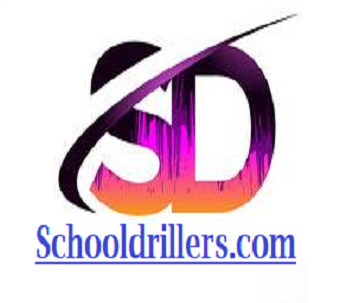Enhance Knowing: Vital Details Resources for Educational Growth
In the contemporary educational landscape, the improvement of knowing is increasingly dependent on important information sources that promote development and involvement. The availability of online learning platforms, educational data sources, and interactive tools has changed conventional strategies, satisfying varied knowing requirements and choices. The combination of multimedia sources and community learning networks cultivates a comprehensive atmosphere that advertises collaboration among teachers and students alike. As we check out these vital elements, one must consider just how they adjoin to develop an extensive structure for academic advancement. What ramifications might this have for future learning environments?
Online Learning Operatings Systems
In today's digital age, on the internet knowing systems have become vital resources for educational development, providing unmatched accessibility to a riches of knowledge. These platforms offer a diverse series of courses, catering to various interests and educational demands. From standard topics like maths and scientific research to modern topics such as coding and electronic advertising and marketing, students can check out a wide variety of disciplines at their own pace.
The flexibility of on-line knowing platforms allows people to customize their educational experiences according to their schedules, making it easier to stabilize professional and individual dedications. Numerous systems integrate interactive features such as quizzes, discussion online forums, and multimedia material, boosting involvement and retention of information.
In addition, on the internet learning systems commonly give chances for students to link with instructors and peers from around the globe, cultivating a collective learning atmosphere. This global perspective enhances the educational experience, subjecting learners to diverse point of views and practices.
Inevitably, the rise of on-line discovering systems represents a transformative change in education and learning, democratizing accessibility to knowledge and equipping people to organize their knowing trips. As modern technology remains to progress, these systems will likely play a significantly popular function in shaping the future of education and learning.

Educational Data Sources
Accessibility to on-line discovering platforms has considerably improved the accessibility of academic resources, but the role of educational databases is equally substantial in sustaining scholastic growth. Educational databases provide a organized and detailed repository of scholarly write-ups, study documents, and various other academic products that are important for extensive understanding and research in various techniques.

In addition, educational data sources frequently include tools for citation management and integration with referral software, which sustain correct scholastic creating methods. By giving accessibility to a wide range of details, instructional data sources not only improve the knowing experience but also foster crucial thinking and logical abilities, vital for scholastic success. Subsequently, they are vital sources in the quest of knowledge and educational quality.
Interactive Educational Devices
Regularly incorporating interactive instructional tools right into the understanding process can significantly improve student involvement and comprehension. These devices, that include online quizzes, gamified finding out systems, and collective software, provide chances for active engagement. Network Number in Nigeria. By motivating trainees to interact with web content instead of passively eat it, these resources cultivate much deeper understanding and retention of product
Interactive tools additionally support set apart instruction, suiting diverse learning designs and rates. Adaptive learning innovations can individualize the educational experience, enabling pupils to progress based on their private needs. Joint systems enable peer-to-peer learning, where trainees can share insights and fix problems jointly, advertising critical thinking and communication skills.
Moreover, the prompt comments supplied by lots of interactive devices enables students to determine areas for enhancement promptly, helping with a more dynamic learning environment. Educators can make use of analytics from these platforms to keep track of student progress and adjust their educational approaches as necessary.

Video and Multimedia Resources
Utilizing video clip and multimedia sources can additionally enrich the educational experience, structure on the engagement promoted by interactive tools. These sources use dynamic and versatile ways to existing info, making complex concepts more obtainable and much easier to recognize for diverse learning designs. Videos can successfully highlight theoretical concepts, supplying auditory and aesthetic stimulations that improve retention.
Multimedia resources, consisting of animations, infographics, and interactive discussions, stimulate rate of interest and facilitate much deeper learning (Network Number in Nigeria). They can break down obstacles to comprehension with engaging narration and real-world applications, permitting learners to contextualize details and see its significance. This technique not only astounds focus but additionally encourages important thinking and imagination, as pupils communicate with material in innovative methods
In addition, the accessibility of numerous platforms for video and multimedia intake-- such as on the internet programs, educational YouTube networks, and virtual reality experiences-- makes sure that students can access top notch material outside typical classroom atmospheres. By integrating these sources right into their academic techniques, instructors can produce a more revitalizing and comprehensive understanding environment, accommodating the special preferences of each pupil while advertising collaborative learning experiences. Inevitably, video and multimedia sources are crucial devices for cultivating comprehensive educational development.
Community Learning Networks
Area learning networks work as crucial platforms for collective education and learning, cultivating links among learners, teachers, and local organizations. These networks promote the sharing of sources, expertise, and experiences, producing an improving atmosphere that improves educational chances for all participants. By leveraging digital devices and neighborhood engagement, individuals can access diverse understanding products and support systems tailored to their requirements.
The essence of area learning networks depends on their inclusivity. They urge engagement from various stakeholders, including households, businesses, and non-profit companies, fostering a sense of shared obligation for education and learning (Network Number in Nigeria). This collective method not only enriches the discovering experience however likewise enhances community connections, promoting a culture of long-lasting knowing
Furthermore, neighborhood knowing networks encourage instructors by giving expert advancement possibilities and collaborative systems for sharing best practices. These networks can also act as incubators for ingenious instructional efforts, dealing with neighborhood obstacles and adjusting to the distinct requirements of the area.
Conclusion
Finally, the assimilation of necessary info sources significantly boosts instructional development. Online understanding systems give adaptable course options, while academic data sources make sure accessibility to qualified research. Interactive tools involve diverse knowing styles, and video 68 Country Code and multimedia resources streamline complicated concepts. In addition, neighborhood understanding networks foster links among students and educators, promoting inclusivity and lifelong learning. Jointly, these resources add to a richer educational experience, outfitting individuals with the expertise and skills needed for success in a progressively intricate world.
The availability of on the internet understanding platforms, academic databases, and interactive devices has transformed traditional strategies, catering to diverse discovering demands and preferences.In today's electronic age, on the internet discovering systems have arised as essential resources for educational growth, providing unparalleled accessibility to a wide range of knowledge. By integrating these sources into their educational practices, educators can develop a more comprehensive and stimulating discovering atmosphere, providing to the distinct preferences of each trainee while promoting joint understanding experiences. On-line learning systems provide versatile training course choices, while instructional databases guarantee access to credible study. Neighborhood understanding networks foster connections amongst instructors and learners, advertising inclusivity and long-lasting understanding.